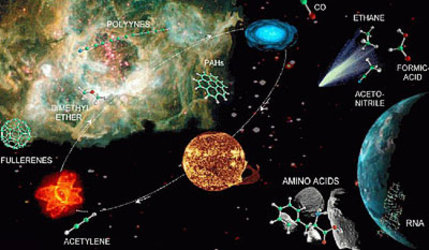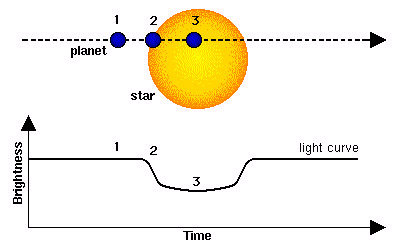How many planets are outside our Solar System?
Since 1995, when Michel Mayor and Didier Queloz of the Observatoire de Geneve, discovered the first planet orbiting another star like the Sun, over two hundred more extrasolar planets have been found in more than 170 solar systems outside our own.
Detected by watching the star wobble, the original discovery by Mayor and Queloz of Geneva Observatory, Switzerland, stunned the world because the planet was initially considered the wrong type for the orbit in which it was found.
Since then, the number of planets detected by this method has grown rapidly. Other methods like detecting planets transiting in front of their star and occulting a small part of the light, or using gravitational lensing (where a star with a planet passes directly in front of a background star and magnifies the light from the latter in a way that reveals the presence of the planet), have become important.
As an example, in October 2006, scientists reported the detection of thermal emission (with NASA’s SPITZER Infrared Space observatory) from ups And b (the first planet discovered around the star Upsilon Andromedae). Together with this detection, the astrometric confirmation of the planet around the star epsilon Eridani, and two new transiting planets WASP-1b and WASP-2b were reported.
Hot Jupiters

Astronomers had initially expected that other solar systems would follow the pattern of our own: small rocky worlds close to the star and gas giants further out. Mayor and Queloz's planet, called 51 Pegasi b, was at least half the mass of Jupiter, the largest planet in our Solar System. However, it was in an orbit eight times smaller than Mercury's, the closest planet to the Sun.
More detections followed, by both the European team and an American one led by Geoff Marcy, then of San Francisco State University. It became obvious that 51 Pegasi b was not an isolated freak. There was a class of large planets in tight, circular orbits. Astronomers dubbed these new worlds 'hot Jupiters'. They are in such small orbits that hot Jupiters circle around their stars in a matter of days.
Eccentric planets
Other data indicated another distinct type of planet known as 'eccentric planets'. These are also gas giant planets but move in larger, elliptical orbits. In our Solar System, the gas giants all follow more-or-less circular paths.
An eccentric planet may be created when two large planets pass close to one another. During the encounter, one is thrown into the eccentric orbit and remains in the Solar System while the other is ejected into interstellar space where it wanders forever. Some astronomers call these planetary rejects, or 'planetars'.
Jupiter analogues

In our Solar System, Jupiter takes 12 years to orbit the Sun, so an observer would have to watch the Sun for a dozen years to see a full cycle and be certain of Jupiter's presence. Astronomers are watching other stars closely for such long-term orbits. As time goes by, astronomers have found planets in larger and larger orbits.
The discovery of the first Jupiter analogue was announced by astronomers from the Geneva Observatory in June 2002. The planet, that has a mass equivalent to Jupiter, takes about seven years to revolve around its sun which is located 553 million kilometres (3.7 AU) from it. It is uncertain, however, to which extent these planets can be considered similar to Jupiter. They are either in very elongated orbits (much more than any planet in the Solar System), or have very large planets in interior orbits, or a combination of both.
Another bonus from long observations is that, as the data accumulate for stars that are already known to have planets, small discrepancies betray other planets in the system. For example, Upsilon Andromedae is now known to possess a system of three large planets. Not less than 4 planets orbit the star HD 160691, and no less than 20 multiple systems have been discovered. Again, none of these is similar to our own Solar System.
Better observations from space
On average, astronomers discover about 25 planets a year. So-called hot Jupiters (or eccentric planets) are found around about 5 percent of the stars studied. It is still too early to say how many of the other 95 percent have systems like our own.
There are currently more than 30 planet-search programmes worldwide using ground-based telescopes. However, the current method of detection does not allow to find Earth-sized worlds. This is due to the disturbances caused by our atmosphere, or by the thermal background generated by the telescope itself, that swamps the signal from the faint planet. To find other Earths, astronomers need new techniques. Such techniques work best from space.








